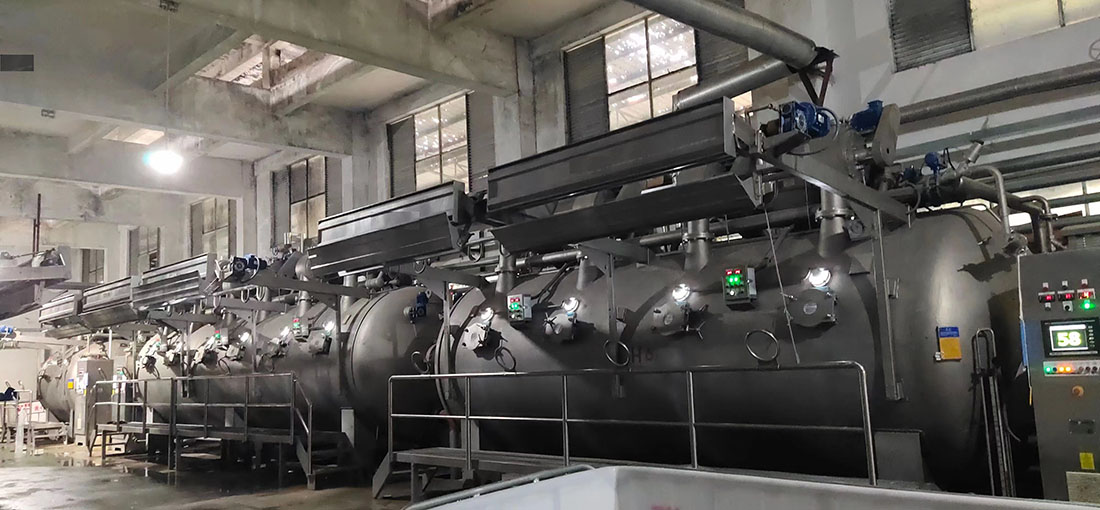High temperature dyeing is a method of dyeing textiles or fabrics in which the dye is applied to the fabric at a high temperature, typically between 180 and 200 degrees Fahrenheit (80-93 degree celsius). This method of dyeing is used for cellulosic fibers such as cotton and linen, as well as for some synthetic fibers such as polyester and nylon.
The high temperatures used in this process cause the fibers to open up, or swell, which allows the dye to penetrate the fibers more easily. This results in a more even and consistent dyeing of the fabric, and the high temperatures also help to fix the dye more firmly to the fibers. High temperature dyeing also offers the advantage of being able to dye fibers with a variety of dyes, unlike low temperature dyeing which is typically limited to disperse dyes.
However, high temperature dyeing also poses some challenges. For example, the high temperatures can cause the fibers to shrink or lose strength, so the fabric must be handled carefully during and after the dyeing process. Additionally, some dyes may not be stable at high temperatures, so they must be used with care.
Overall, High temperature dyeing is a method that is widely used in textile industries to dye cellulosic and synthetic fibers, providing a high quality, even and consistent dyeing process.
What is the use of room temperature dyeing machine?
A room temperature dyeing machine, also known as a cold dyeing machine, is a machine used to dye textiles or fabrics at room temperature, typically between 60 and 90 degrees Fahrenheit (15-32 degree celsius). This method of dyeing is typically used for protein fibers such as wool, silk, and some synthetic fibers such as nylon and rayon, as well as for some cellulosic fibers such as cotton and linen.
The use of room temperature dyeing is beneficial in a few ways:
It allows for a gentler treatment of the fibers than high-temperature dyeing. This is especially beneficial for protein fibers which are sensitive to high temperatures.
It also allows for a greater variety of dyes to be used than high-temperature dyeing, which is typically limited to disperse dyes. This can make it possible to achieve a wider range of colors and effects on the fabric.
The lower temperature also reduces energy consumption and may help to minimize environmental impact of dyeing process.
Room temperature dyeing machine typically uses a dye bath, which is a solution of dye and other chemicals, such as salts and acids, that are used to aid in the dyeing process. The fabric is immersed in the dye bath, which is agitated to ensure that the dye is distributed evenly throughout the fabric. The fabric is then removed from the dye bath, rinsed, and dried.
However, room temperature dyeing can be less effective than high-temperature dyeing in terms of color fastness and consistency of dyeing. It can also take longer to complete the dyeing process than high temperature dyeing.
Overall, Room temperature dyeing machine is a gentler, versatile alternative to high temperature dyeing machine that can be used to dye a variety of fibers and achieve a wide range of colors, but it might not have the same level of dyeing quality and consistency as high temperature dyeing process and can take longer to complete.

Post time: Jan-30-2023
